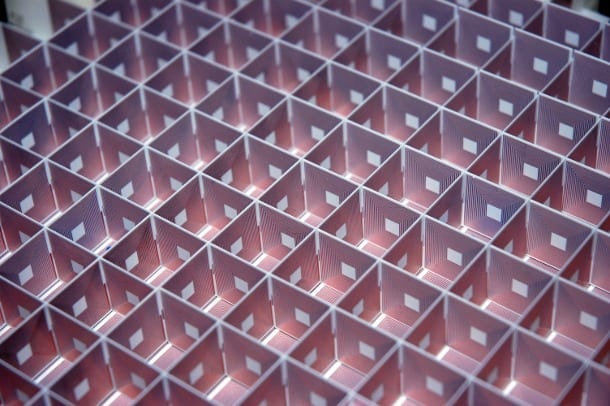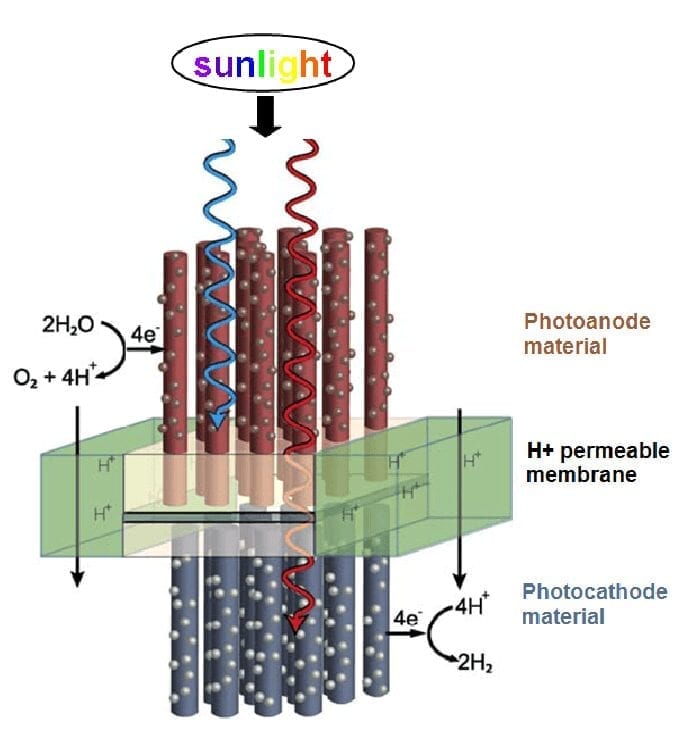
The magnetic field is focused nearly a foot away with enough strength to induce noticeable electric current
Inventor Nikola Tesla imagined the technology to transmit energy through thin air almost a century ago, but experimental attempts at the feat have so far resulted in cumbersome devices that only work over very small distances. But now, Duke University researchers have demonstrated the feasibility of wireless power transfer using low-frequency magnetic fields over distances much larger than the size of the transmitter and receiver.
The advance comes from a team of researchers in Duke’s Pratt School of Engineering, who used metamaterials to create a “superlens” that focuses magnetic fields. The superlens translates the magnetic field emanating from one power coil onto its twin nearly a foot away, inducing an electric current in the receiving coil.
The experiment was the first time such a scheme has successfully sent power safely and efficiently through the air with an efficiency many times greater than what could be achieved with the same setup minus the superlens.
The results, an outcome of a partnership with the Toyota Research Institute of North America, appear online in Nature Scientific Reports on Jan. 10.
“For the first time we have demonstrated that the efficiency of magneto-inductive wireless power transfer can be enhanced over distances many times larger than the size of the receiver and transmitter,” said Yaroslav Urzhumov, assistant research professor of electrical and computer engineering at Duke University. “This is important because if this technology is to become a part of everyday life, it must conform to the dimensions of today’s pocket-sized mobile electronics.”
In the experiment, Yaroslav and the joint Duke-Toyota team created a square superlens, which looks like a few dozen giant Rubik’s cubes stacked together. Both the exterior and interior walls of the hollow blocks are intricately etched with a spiraling copper wire reminiscent of a microchip. The geometry of the coils and their repetitive nature form a metamaterial that interacts with magnetic fields in such a way that the fields are transmitted and confined into a narrow cone in which the power intensity is much higher.
On one side of the superlens, the researchers placed a small copper coil with an alternating electric current running through it, which creates a magnetic field around the coil. That field, however, drops in intensity and power transfer efficiency extremely quickly, the further away it gets.
“If your electromagnet is one inch in diameter, you get almost no power just three inches away,” said Urzhumov. “You only get about 0.1 percent of what’s inside the coil.” But with the superlens in place, he explained, the magnetic field is focused nearly a foot away with enough strength to induce noticeable electric current in an identically sized receiver coil.
Urzhumov noted that metamaterial-enhanced wireless power demonstrations have been made before at a research laboratory of Mitsubishi Electric, but with one important caveat: the distance the power was transmitted was roughly the same as the diameter of the power coils. In such a setup, the coils would have to be quite large to work over any appreciable distance.
The Latest on: Wireless Power Transfer
[google_news title=”” keyword=”Wireless Power Transfer” num_posts=”10″ blurb_length=”0″ show_thumb=”left”]
via Google News
The Latest on: Wireless Power Transfer
- Galvion introduces BATLCHRG for seamless wireless charging in special operationson May 9, 2024 at 1:39 pm
Galvion unveiled the BATLCHARG wireless charging system at SOF Week, designed for special operations forces to recharge gear on the move or while stationary, enhancing battlefield power management ...
- Reach Establishes Government Advisory Board to Drive Growth in Federal Businesson May 8, 2024 at 9:21 am
Distance, today announced the creation of its Government Advisory Board. This newly established board, focused on guiding Reach's growth in the public sector, will be anchored by Major General (Ret.) ...
- Wireless Charging Market: Anticipated Surge with 24.4% CAGR, Targeting US$ 150,889.5 Million by 2033on April 28, 2024 at 8:16 pm
Anticipating a remarkable 24.4% yearly growth, leading to a market worth US$ 150,889.5 Million by 2033 Future Market Insights, an ESOMAR-certified market research organization and a Greater New York ...
- Wireless Electric Vehicle Charging Market Research Report Analysis, Future Innovations, Growth Elements, and Recent Development 2024 to 2032on April 28, 2024 at 7:29 pm
Report Ocean has recently unveiled its research findings on the “Wireless Electric Vehicle Charging Market” spanning from 2024 to 2032. This comprehensive report thoroughly analyzes the market ...
- Wireless Car Charger, Now 75% Offon April 27, 2024 at 8:25 am
Discerning drivers who are always on the go now have a reason to rejoice as the cutting-edge Wireless Car Charger from BothLin is currently available with an incredible 75% discount exclusively on ...
- Wireless Power Transferon April 10, 2024 at 3:01 am
Cambridge University Press ceased publication on completion of Volume 7 / 2020. From Volume 8 / 2021 to Volume 10 / 2023, the Journal was published by Hindawi (https ...
- Gentex Invests In Wireless Power Transfer Technology Company Solace Power - What's On The Cards?on January 13, 2024 at 7:21 pm
Solace Power's proprietary technology, supported by 27 patents, can continuously deliver up to 3 kilowatts of power at distances up to 375mm through various mediums, including air, glass, wood ...
- WiFi Newson January 10, 2024 at 4:00 pm
Scientists Develop an Energy-Efficient Wireless Power and Information Transfer System Sep. 5, 2023 — Simultaneous wireless information and power transfer (SWIPT)-aided nonorthogonal multiple ...
- Special Episode: Laying the Groundwork for Wireless Power Transferon January 16, 2023 at 4:00 pm
Professor emeritus Takashi OHIRA of Toyohashi University of Technology is working on the development of a wireless power transfer technology that can run a motor by receiving high-frequency wave ...
- wireless file transferon August 26, 2011 at 4:59 pm
[Bobby] thought is was a good starting point, but wanted a more portable version to use as a wireless file transfer device for ... hardware [Bobby] ditched the power-hungry WiFi adapter that ...
via Bing News










